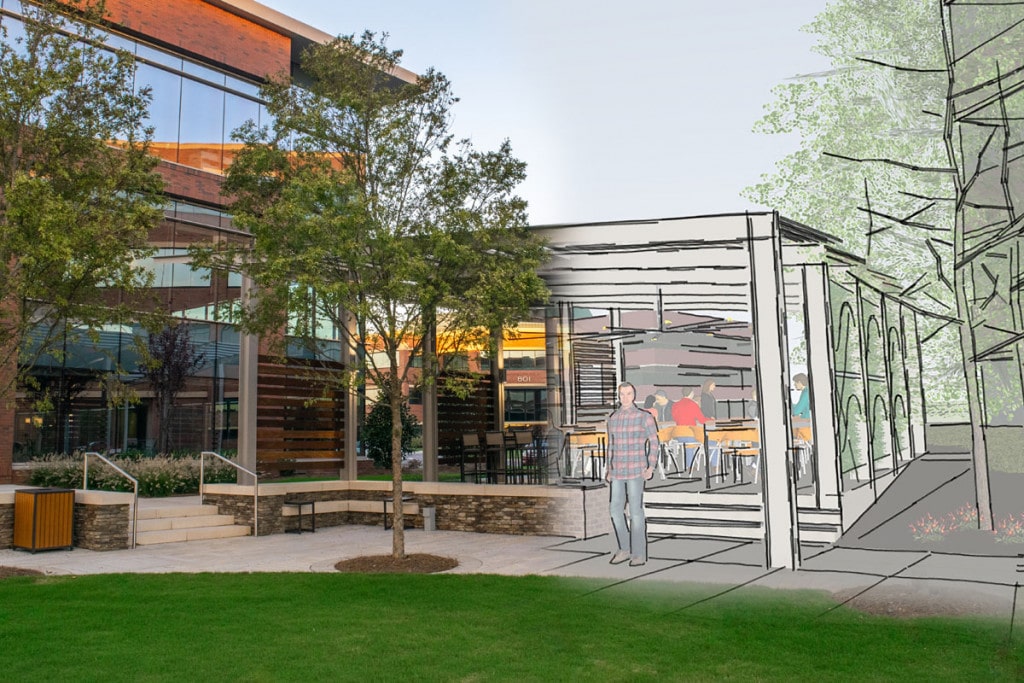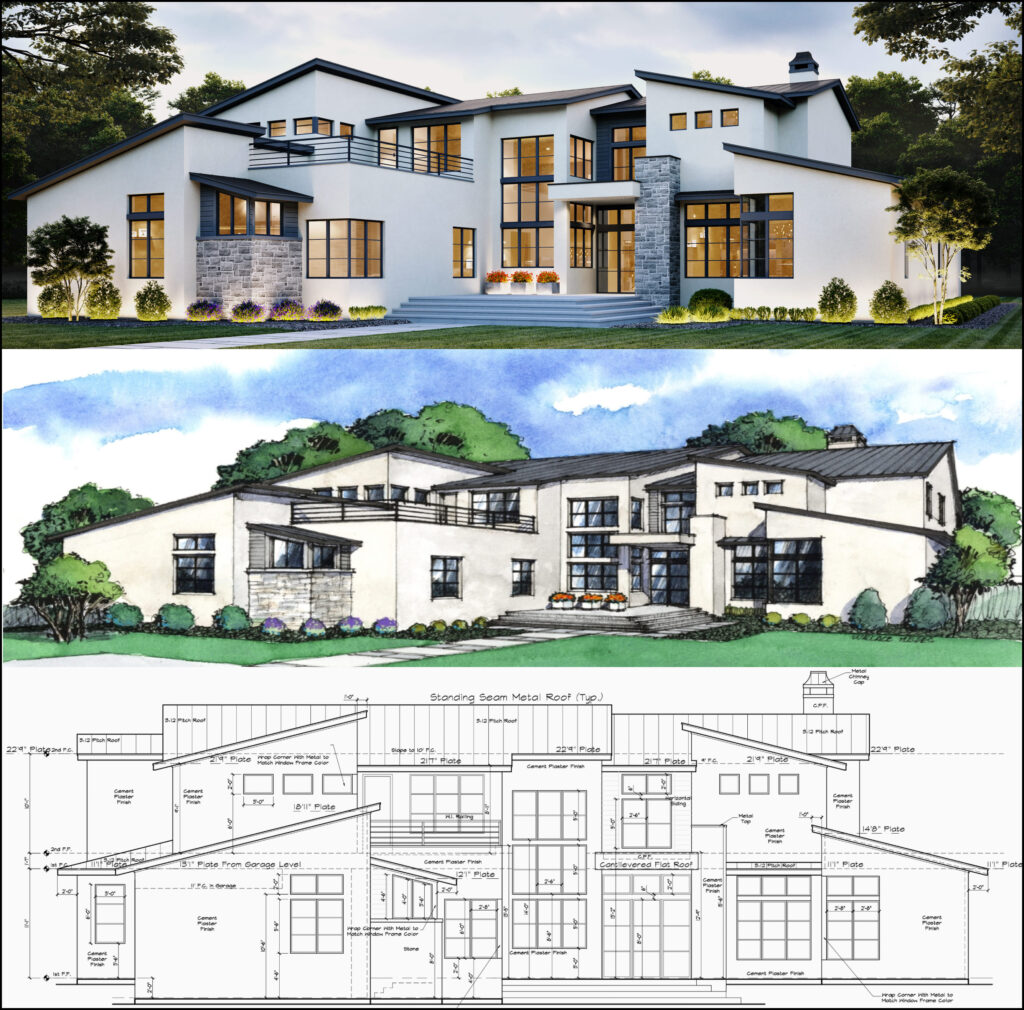Understanding the Collaborative Refine In Between Architects and Designers in Modern Building And Construction Projects
The joint procedure in between designers and designers is necessary in modern construction jobs, as it harmonizes layout intent with design expediency. This partnership not only affects the visual and functional aspects of a task however additionally plays an important duty in attending to sustainability challenges. By employing effective communication approaches and leveraging innovative innovations, such as Building Details Modeling (BIM), teams can work more cohesively. The details of this collaboration commonly present distinct challenges that can prevent development. Exploring these dynamics exposes insights that might significantly influence task outcomes and total sector criteria. cda architects.
The Value of Collaboration
The joint synergy in between designers and engineers is important for the successful understanding of any type of building and construction job. This collaboration combines distinct competence and point of views, enabling the integration of cutting-edge layout with functional engineering options. By functioning with each other, designers and engineers can make sure that a project not only satisfies aesthetic and functional needs however also sticks to safety, sustainability, and financial restraints.
Collaboration cultivates a common vision, facilitating the alignment of goals and expectations from the start. This placement is crucial in dealing with prospective challenges and mitigating dangers that could arise throughout the project lifecycle. Additionally, a joint strategy permits for the efficient appropriation of sources, maximizing both time and expense.
The relevance of cooperation reaches the iterative process of layout and building and construction, where feedback from engineers can notify building decisions, resulting in even more feasible and lasting designs. Conversely, designers can motivate engineers to believe creatively concerning just how to achieve structural honesty without jeopardizing creative intent. Ultimately, the collaborative connection between engineers and designers is not merely useful; it is fundamental to the development of top notch, practical, and cutting-edge developed atmospheres that satisfy the demands of society.
Interaction Strategies and Tools
Reliable interaction methods and tools are important for promoting cooperation in between engineers and engineers throughout the job lifecycle. Developing clear networks of interaction is necessary to ensure that all team members are aligned with task objectives, timelines, and obligations. Normal conferences, both in-person and digital, offer possibilities for stakeholders to discuss development, address worries, and make educated decisions.

Furthermore, embracing collective communication devices, such as Slack or Microsoft Teams, enables instantaneous messaging, documents sharing, and recurring conversations, advertising a much more dexterous response to arising issues. Document monitoring systems also play a vital function in arranging task documents, guaranteeing that all employee have accessibility to the most current info.
Shared Goals and Job Vision
A combined task vision works as the foundation for successful cooperation between engineers and engineers (cda architects). This shared vision not just lines up the efforts of both celebrations but additionally develops an usual framework for decision-making throughout the job's lifecycle. By expressing clear click for source objectives, stakeholders can successfully browse go to website the intricacies of modern-day construction jobs, making sure that both aesthetic and functional needs are satisfied
Developing shared objectives entails open dialogue and a complete understanding of each discipline's payments. Designers normally concentrate on layout intent, spatial partnerships, and user experience, while engineers stress architectural honesty, systems capability, and conformity with regulations. When these point of views are lined up, the outcome is a cohesive project that abides by both innovative goals and technological usefulness.
Furthermore, a well-defined job vision promotes responsibility amongst staff member, encouraging each individual to take possession of their function in achieving the desired result. Regular check-ins and collective workshops can better enhance this dedication, enabling changes to be made as the project develops. Inevitably, a common vision not just improves teamwork yet additionally elevates the top quality of the last deliverable, leading to effective project completion.
The Function of Modern Technology
Leveraging technology has ended up being necessary in improving collaboration between designers and engineers. The combination of sophisticated software application tools facilitates real-time communication and info sharing, allowing groups to function a lot more successfully and successfully. Structure Info Modeling (BIM) attracts attention as an essential innovation, enabling both architects and designers to develop thorough 3D designs that encapsulate style intent and architectural integrity. This shared graph reduces misconceptions and simplifies the decision-making process.
Moreover, cloud-based platforms allow seamless partnership, allowing task stakeholders to gain access to and update project information from anywhere. This promotes a culture of transparency and liability, as modifications can be tracked and examined in real-time. Furthermore, mobile applications further boost communication, giving on-site groups with prompt access to project requirements and updates.
Arising modern informative post technologies such as expert system and artificial intelligence are also starting to contribute in anticipating evaluation, assisting groups recognize prospective concerns prior to they emerge. Ultimately, the function of technology in architecture-engineering cooperation not only improves workflow effectiveness but additionally improves innovation, causing more successful task results. By welcoming these technological developments, engineers and engineers can guarantee a much more cohesive and productive collaborative procedure throughout the building lifecycle.
Situation Studies in Effective Partnerships
Numerous study highlight the extensive impact of efficient partnerships in between designers and engineers on job outcomes. One noteworthy instance is the partnership on the High Line in New York City, where landscape designers, designers, and urban organizers interacted to transform a deserted railway right into a vivid public park. This multidisciplinary method not just enhanced the aesthetic top quality but additionally ensured structural safety and ecological sustainability.

The Burj Khalifa in Dubai further shows the value of collaborative initiatives - cda architects. The assimilation of style and engineering know-how allowed the project team to achieve unprecedented heights while adhering to safety and security policies and visual vision
These examples underscore the significance of interaction, trust, and shared purposes. In today's complicated construction setting, such partnerships are necessary to navigating obstacles and delivering projects that meet both useful and visionary objectives.
Conclusion
To conclude, the partnership between architects and engineers is vital for the success of contemporary construction tasks. Effective interaction methods, a common project vision, and the combination of sophisticated modern technologies are important parts that promote this collaboration. By promoting a culture of liability and leveraging devices such as Structure Details Modeling (BIM), groups can navigate task complexities, making sure that aesthetic, useful, and sustainability purposes are attained. Ultimately, this harmony causes ingenious and effective task results.